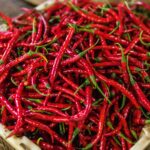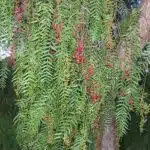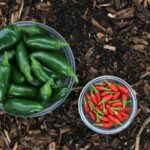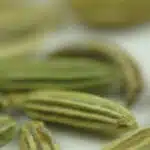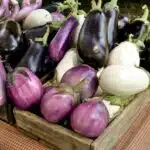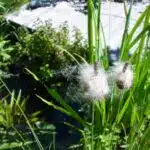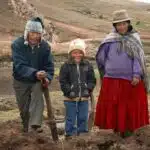Hot peppers are a favorite ingredient in many cuisines, ranging from Mexican to Thai and Indian. They add heat and flavor to dishes, making them an essential component of many recipes. Growing hot peppers is not only a great way to ensure a constant supply of fresh peppers but also an opportunity to experiment with different varieties and create unique flavor combinations. In this article, we will explore the best practices for growing hot peppers, including soil preparation, planting techniques, pest management, and harvesting.
The success of growing hot peppers depends on various factors such as climate, soil quality, sun exposure, and watering. Hot peppers require warm weather conditions with plenty of sunlight and well-draining soil that is rich in organic matter. Choosing the right variety for your growing region is also crucial since some types of hot peppers thrive in specific climates. Moreover, pests like aphids and spider mites can damage the pepper plants if left unchecked. Therefore, it’s essential to learn how to protect your plants from pests while minimizing the use of harmful chemicals that can harm both the environment and human health. By following these tips and techniques, you can grow healthy and vigorous hot pepper plants that will produce abundant yields all season long.
Benefits Of Growing Hot Peppers
Hot peppers are a popular crop among home gardeners and farmers alike. The benefits of growing hot peppers extend beyond the culinary advantages they offer. These plants contain significant health benefits, making them an excellent addition to any garden.
One of the primary reasons for growing hot peppers is their use in cooking. The vibrant colors, complex flavors, and heat levels of these peppers make them an exciting ingredient to work with. Hot peppers add depth to many traditional dishes and can also be used in unique recipes to create new flavors. As such, growing hot peppers can help save money on grocery bills while expanding one’s culinary horizons.
In addition to the culinary benefits, consuming hot peppers has several health benefits. They contain capsaicin, a compound that has been linked with pain relief, improved heart health, and cancer prevention. Hot peppers also contain vitamins A and C, which support healthy skin and immune function. Growing hot peppers in your garden can provide access to fresh produce that is both delicious and nutritious.
Choosing the right variety for your climate is crucial for successful pepper cultivation.
Choosing The Right Variety For Your Climate
- The first step in selecting the right variety of hot pepper for a particular climate is to determine the climate zone of the area.
- This can easily be done by accessing a climate zone map of the area, which will indicate the average temperatures and precipitation amounts.
- Once the climate zone is known, certain varieties of hot pepper plants can be chosen which are suitable for the climate and will thrive in the area.
- Plant specialists can provide valuable advice on which varieties are best suited for a particular climate zone and how to care for the plants for optimal growth.
Determining Climate Zone
Hot pepper cultivation requires careful consideration of climate conditions to achieve optimal results. Different hot pepper varieties are adapted to different climates, and choosing the right variety for your climate is crucial for successful growth. Determining your climate zone is an important first step in the process.
Climate adaptation strategies are critical for hot pepper cultivation, as they enable growers to optimize yields, enhance disease resistance, and manage pests. The first step in determining the best hot pepper variety for your climate is to research your region’s specific climatic conditions. This includes factors such as temperature range, humidity levels, precipitation patterns, soil type and pH level.
Once you have determined your climate zone and researched local climatic conditions, you can select a hot pepper variety that is well-suited for those conditions. For example, if you live in a region with cold winters and short growing seasons, you may want to choose a variety that matures quickly or has frost tolerance. Alternatively, if you live in a region with high humidity levels and frequent rainfall, you may need to choose a variety that has strong disease resistance or is less prone to rot.
In conclusion, determining your climate zone is essential when choosing the right hot pepper variety for your garden. By researching local climatic conditions and selecting a variety that is adapted to those conditions, you can optimize yields and enhance disease resistance while managing pests effectively. With these strategies in mind, you can grow healthy and delicious hot peppers that thrive in your unique environment.
Selecting Varieties For Zone
Selecting the right variety for your climate is crucial to ensure optimal growth and yield of hot peppers. One of the first things you need to consider when selecting a variety is its adaptability to your zone. Some hot pepper varieties are better suited for certain zones than others, and choosing the right one can make all the difference in the success of your harvest.
To select the best varieties for your zone, you must first identify what growing conditions are prevalent in your area. Factors like temperature range, humidity levels, soil type and pH level can all play a role in determining which varieties will thrive. Once you have determined these factors, you can start looking at different hot pepper varieties that are known to perform well under those conditions.
When selecting hot pepper varieties for your zone, it’s also important to consider flavor profiles. While some people prefer milder peppers, others enjoy a more intense heat. There are also variations in flavor between different types of hot peppers, such as jalapeños or habaneros. By considering both growing conditions and flavor profiles, you can select hot pepper varieties that not only grow well but also meet your personal preferences for taste and heat level.
Preparing The Soil For Hot Pepper Plants
In order to grow healthy hot pepper plants, it is important to prepare the soil correctly. The first step in this process is to test the pH level of your soil using a simple testing kit that can be purchased at any garden center or online. Hot peppers prefer a slightly acidic soil with a pH between 6.2 and 7.0, so if your soil is too alkaline, you will need to add some amendments.
One of the best ways to amend your soil and lower its pH level is through composting techniques. Composting involves breaking down organic matter such as leaves, grass clippings, and food scraps into a nutrient-rich material that can be added to your soil. This not only helps to lower the pH level but also improves the overall texture and fertility of the soil. You can create your own compost pile or purchase pre-made compost from a garden center.
Once you have tested and amended your soil, you are ready to plant your hot pepper seeds. However, before doing so, it may be beneficial to start your seeds indoors for a head start on the growing season. In order to do this successfully, you will need to provide them with adequate light, water, and warmth until they are ready to be transplanted outdoors. In the next section, we will discuss how to start hot pepper seeds indoors and ensure their successful growth.
Starting Hot Pepper Seeds Indoors
- Planting hot pepper seeds indoors should be done at the start of the season, typically 4-6 weeks before the last frost.
- When selecting seeds, look for ones that are labeled specifically for indoor planting or ones that have a shorter maturity rate.
- It is important to select pepper varieties that are suitable to the local climate as some peppers require more heat or more light to mature than others.
- Additionally, consider the size of the space available for the pepper plants and the desired harvest size when selecting a variety of pepper seed.
Timing Planting
Timing planting is one of the best practices when starting hot pepper seeds indoors. As a horticulturalist, it is essential to understand that the ideal time to plant hot pepper seeds is about eight weeks before the last frost date in your region. This timing ensures that the seedlings are ready for transplanting into the garden when outdoor conditions are favorable. Starting hot pepper seeds indoors also provides ample time for germination and growth, allowing you to have mature plants with an extensive root system.
One common mistake when starting hot pepper seeds indoors is planting them too early or too late. If planted too early, the seedlings may outgrow their containers and become root-bound before transplanting them into the garden, leading to stunted growth. On the other hand, if planted too late, they may not mature enough before the end of summer and produce fewer fruits than expected. It’s crucial to follow regional planting schedules and consider factors such as weather patterns and soil temperature.
Another best practice when timing planting for starting hot pepper seeds indoors is providing adequate lighting for the seedlings’ growth. Insufficient light can result in weak stems and lower yields while excess light can cause stress on young plants. Providing 14-16 hours of artificial light per day helps mimic natural sunlight conditions and promote healthy growth. Also, ensure that you maintain proper watering schedules as overwatering or underwatering can lead to diseases or stunt seedling growth.
In conclusion, timing planting is crucial when starting hot pepper seeds indoors. As a plant specialist, following best practices such as regional planting schedules and adequate lighting promotes healthy growth while avoiding common mistakes such as overcrowding or insufficient lighting helps achieve maximum yield potential for your hot peppers.
Seed Selection
Hot pepper cultivation begins with seed selection, an essential aspect of starting hot pepper seeds indoors. As a horticulturalist, it’s crucial to choose high-quality seeds from reputable pepper seed sources. The quality of the seeds determines the growth potential and yield of your plants. When selecting hot pepper seeds, consider factors such as disease resistance, heat tolerance, and flavor profile.
For disease resistance, choose seeds that are resistant to common diseases such as bacterial spot, anthracnose, and phytophthora blight. Heat tolerance is another factor to consider when selecting hot pepper seeds. Choose varieties that can withstand high temperatures without wilting or losing their fruiting capacity. Lastly, select flavors that appeal to you or your target market if you’re growing peppers for commercial purposes.
Once you’ve selected the right variety of hot pepper seeds, it’s time to start planting them indoors using best practices such as timing planting and providing adequate lighting. Ensure that you follow instructions on the seed packets regarding planting depth and spacing between the seeds. Also, label each container with the name of the variety planted to avoid confusion during transplanting.
In conclusion, selecting high-quality hot pepper seeds is crucial for successful hot pepper cultivation. Choosing varieties that are disease resistant, heat tolerant and have desirable flavor profiles ensures maximum yield potential while following best practices such as labeling containers during planting helps prevent confusion during transplanting.
Planting Hot Pepper Seedlings Outdoors
After starting hot pepper seeds indoors, it is time to transplant them outdoors once they have grown into seedlings. However, before planting them outside, there are several factors that need to be considered in order to ensure a successful harvest. One of the important factors is the type of soil being used. Hot peppers require well-draining soil that is rich in nutrients such as nitrogen, phosphorus and potassium.
When planting hot pepper seedlings outdoors, mulching techniques can be employed to help retain moisture in the soil and prevent weed growth. Mulch also helps regulate the temperature around the plant roots, keeping them cool during hot weather and warm during colder temperatures. Additionally, companion planting can be utilized to promote healthier growth and repel pests. Planting herbs like basil or cilantro alongside hot pepper plants can deter aphids and other harmful insects from attacking the plants.
To ensure healthy growth throughout the growing season, it is crucial to properly water and fertilize hot pepper plants. Watering should be done regularly but not excessively as overwatering can lead to root rot. Fertilizing should also be done with caution as too much fertilizer can cause foliage burn or slow down fruit production. Using organic fertilizers like compost or worm castings can provide essential nutrients without harming the environment or causing harm to beneficial insects.
Watering And Fertilizing Hot Pepper Plants
Watering techniques are critical to the growth and development of hot pepper plants. The amount of water and frequency of watering depend on factors such as temperature, humidity, soil type, and plant size. Overwatering can lead to root rot, while under-watering can stunt growth or cause the fruit to be small or misshapen. It is essential to avoid getting water on the leaves as it increases the risk of fungal diseases.
Organic fertilizers are an excellent option for those who want to grow hot peppers in a sustainable way. They provide essential nutrients that help with plant growth and fruit production without harming the environment. Some popular organic options include compost, worm castings, and fish emulsion. It is crucial to follow the manufacturer’s instructions when applying fertilizer as too much could damage the plant.
In summary, proper watering techniques and using organic fertilizers are important factors in growing healthy hot pepper plants. By understanding the needs of your specific pepper plants and adjusting watering and fertilizing accordingly, you can ensure a bountiful harvest of delicious peppers that you can enjoy for months to come. However, pests and diseases can pose significant challenges to your efforts in growing hot peppers; thus, learning how to manage them effectively is necessary for successful cultivation.
Managing Pests And Diseases
Insect control for hot peppers is an important part of pest management. Cultural practices such as crop rotation and field sanitation can help reduce the potential for insect infestation. Proper timing of insecticide applications and use of appropriate insecticides can also be effective in controlling insect pests. Disease prevention is also important for hot pepper production, as prevention of infection is always preferable to trying to cure an infection that has already occurred. Fungal management is necessary to reduce the risk of diseases such as powdery mildew and root rot. Practices such as avoiding overhead irrigation and keeping the foliage dry can help reduce the potential for fungal infestations. Appropriate fertilizer application and fungicide use may also be necessary for effective fungal management.
Insect Control
When it comes to growing hot peppers, pests and diseases can pose a significant threat to the overall health and yield of your plants. Proper pest management is crucial to maintaining healthy plants and maximizing your harvest. Insect control is an essential aspect of pest management that requires careful attention.
Natural remedies are often the preferred method for controlling insect infestations in hot pepper plants. Beneficial insects such as ladybugs, lacewings, and praying mantises can be introduced into your garden to help control harmful pests like aphids and spider mites. Neem oil, insecticidal soap, and garlic spray are also effective natural remedies for controlling insects. These natural solutions are safe for both you and your plants.
In some cases, chemical treatments may be necessary to control particularly stubborn insect infestations. However, it’s important to use these treatments judiciously as they can harm beneficial insects as well as the environment. When using chemical treatments, always follow the label instructions carefully and wear protective clothing to minimize exposure. Remember that prevention is always better than cure when it comes to managing pests and diseases in your hot pepper garden.
Disease Prevention
Effective management of pests and diseases is essential for maintaining healthy hot pepper plants and maximizing their yield. In addition to insect control, disease prevention is also a critical aspect of pest management. Organic methods can be used to prevent the occurrence of common diseases in hot peppers.
One effective way to prevent disease is to start with healthy plants. When purchasing seedlings, choose ones that are free from any signs of disease or stress. Make sure to keep your garden clean and well-maintained by removing any dead plant material or debris that may harbor harmful pathogens. Proper spacing between plants also helps promote good air circulation and reduces the risk of disease spread.
Another organic method for preventing disease is through the use of natural fungicides such as copper sulfate or sulfur. These treatments are safe for both you and your plants and can help reduce the risk of fungal infections such as powdery mildew or leaf spot. Regularly inspecting your plants for any signs of disease and addressing them promptly can also help prevent further spread and damage.
By implementing these organic methods, you can proactively prevent common diseases in your hot pepper garden. Remember that prevention is key when it comes to managing pests and diseases in your plants, so be sure to take proper precautions from the outset to ensure a successful harvest.
Fungal Management
Effective management of pests and diseases is crucial for maintaining healthy hot pepper plants and ensuring a bountiful yield. One of the most common issues that affect hot peppers is fungal infections, which can be caused by pathogens like powdery mildew, gray mold, and root rot. These fungi thrive in warm and humid environments, making it essential to take preventative measures to avoid their occurrence.
One way to manage fungal infections in hot peppers is through the use of natural remedies. Plant-based fungicides such as neem oil, garlic extract, or chamomile tea can be used as an effective preventative measure against fungal diseases. These natural methods are safe for both the plants and the environment, making them an excellent choice for organic gardening.
Another critical aspect of fungal management is maintaining proper garden hygiene. Regularly removing dead plant material or debris from the garden can help prevent fungal spores from spreading and infecting other plants. Good air circulation between plants also helps prevent the buildup of moisture that fungi need to thrive.
In conclusion, managing fungal infections in hot peppers requires a combination of preventative measures and natural remedies. By taking steps to maintain good garden hygiene and implementing organic methods like using plant-based fungicides, you can effectively manage fungal diseases while keeping your hot pepper plants healthy and productive.
Pruning And Supporting Hot Pepper Plants
Imagine having a hot pepper plant with branches so heavy with fruit that it falls over, causing the plant to break. This is a common problem faced by many gardeners who grow hot peppers. To prevent this from happening, it is important to use pruning techniques and support structures. Pruning involves removing some of the plant’s branches to increase air circulation, allowing light to penetrate deeper into the plant, and stimulate new growth. Support structures like cages, trellises or stakes can be used to keep plants upright and support heavy fruits.
When pruning hot pepper plants, care must be taken not to remove too many branches as this can reduce the yield of the plant. It is recommended that only 1/3 of the total branches are removed during each pruning session. Pruning should begin when the seedling has at least 4-6 leaves and continue throughout the growing season. Dead or diseased branches should be removed immediately as they can harbor pests and diseases that may spread to healthy parts of the plant.
Support structures must also be put in place early in a hot pepper plant’s life cycle before it becomes too large or unwieldy. Cages made from wire mesh or bamboo sticks can be used for determinate varieties that grow bush-like while trellises or stakes are better suited for indeterminate varieties that grow tall like vines. The support structure should be sturdy enough to withstand strong winds and rain while providing adequate space for the plant’s growth.
As you can see, pruning techniques and support structures are crucial components of growing healthy hot pepper plants with high yields. By following these guidelines, you will ensure your plants remain healthy and productive throughout their lifespan. In our next section, we will discuss harvesting and storing hot peppers so you can enjoy your bountiful harvest all year round!
Harvesting And Storing Hot Peppers
Once your hot peppers have reached maturity, it is time to harvest them. Peppers can be harvested at any stage of growth, but for optimal flavor and heat, it is best to wait until they are fully matured. When harvesting, use pruning shears or a sharp knife to cut the stem just above the pepper. Be sure not to damage the plant during this process.
After harvesting your hot peppers, it is important to properly store them in order to preserve their quality. Store fresh peppers in a cool, dry place away from direct sunlight. For longer storage periods, consider drying or pickling your peppers. Drying is a simple process that involves hanging the peppers in a warm, dry location until they are completely dehydrated. Pickling involves immersing the peppers in vinegar and spices for several weeks before storing them in jars.
Hot peppers are a versatile ingredient that can add flavor and heat to many dishes. They can be used fresh, cooked, or preserved for future use. When cooking with hot peppers, be sure to handle them with care as they can irritate skin and eyes. Adding hot peppers to soups, stews, and sauces can provide a spicy kick while using dried or pickled hot peppers can give added depth of flavor to marinades and rubs.
As you become more familiar with cooking with hot peppers, try experimenting with different varieties and combinations to create unique flavor profiles. The next section will provide tips on how to combine different types of hot peppers for maximum flavor impact in your dishes.
Tips For Creating Unique Flavor Combinations With Hot Peppers
Harvesting and storing hot peppers can be a rewarding experience for any gardener. However, the real excitement comes from growing these fiery fruits yourself. Growing hot peppers is not only easy but also adds spice to your culinary creations. If you’re looking to grow hot peppers, then there are a few things that you should keep in mind.
Firstly, choose the right variety of pepper that will thrive in your climate. Hot peppers thrive in warm temperatures with plenty of sun exposure. It’s important to note that different types of hot peppers have varying heat levels, so it’s essential to choose the one that suits your taste buds. Secondly, maintain soil moisture and provide adequate drainage to avoid waterlogging the roots. Hot peppers require consistent watering but don’t overdo it as excessive watering can stunt their growth.
Thirdly, fertilize regularly with a balanced fertilizer to ensure optimum growth and fruit production. Fourthly, keep an eye out for pests such as aphids, spider mites or whiteflies which can negatively affect pepper plants. Now that we’ve covered some basic tips on how to grow hot peppers let’s discuss some pairing suggestions and recipe ideas.
Pairing Suggestions:
- Pair jalapeños with creamy cheeses like feta or ricotta
- Habanero pairs well with tropical fruits like mango or pineapple
- Serrano chilies pair perfectly with citrus flavors like lime or orange juice
- Ghost chili goes well with meats like beef or pork
Recipe Ideas:
- Make a spicy salsa using fresh tomatoes, onions and jalapeños. 2.Grill up some shrimp skewers seasoned with habanero chili powder. 3.Make a zesty salad dressing using serrano chili blended with olive oil and lime juice. 4.Try making ghost chili marinade for chicken wings – spicy yet delicious!
Growing hot peppers is an excellent way to add flavor and heat to your dishes while also cultivating new gardening skills. By following the right steps, you can grow an abundance of hot peppers and experiment with different pairing suggestions and recipe ideas. So, start planting today and enjoy the fruits of your labor!
Conclusion
Growing hot peppers is a rewarding experience that offers many benefits. Not only are they a delicious addition to any meal, but they also have numerous health benefits, including boosting metabolism and aiding digestion. To successfully grow hot peppers, it’s important to choose the right variety for your climate and prepare the soil properly. Starting seeds indoors and transplanting seedlings outdoors is also crucial for their growth.
Managing pests and diseases is another important aspect of growing hot peppers. Pruning and supporting the plants can help them thrive, while harvesting at the right time and storing them properly ensures maximum flavor. For those looking to create unique flavor combinations, experimenting with different types of hot peppers can lead to delicious results.
In conclusion, growing hot peppers requires patience and attention to detail, but the rewards are well worth it. With proper preparation, care, and experimentation, anyone can enjoy a bountiful harvest of spicy goodness. So why not try your hand at growing hot peppers today? Your taste buds (and health) will thank you!
Image Credits
- “Red Hot Chili Peppers” by Upshaw Imagery (featured)


